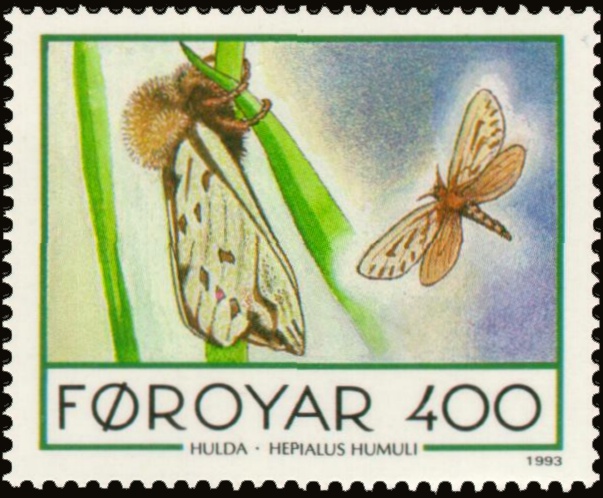Ghost Moth (Hepialus humuli) - Wiki Ghost Moth
From Wikipedia, the free encyclopedia
[Photo] Butterflies in the Faroe Islands: Hepialus humuli. Stamp FR 245 of Postverk Føroya. Date of issue: 4 October 1993. Artist: B??rður J??kupsson.
The Ghost Moth (Hepialus humuli), also known as the Ghost Swift, is a moth of the family Hepialidae. It is common throughout Europe except for the far south-east. This species is now considered the only species in the genus Hepialus which previously included several other species now reclassified into other genera.
The male has a wingspan of about 44 mm and both forewings and hindwings are pure white (although in H. h. thulensis, found in Shetland and the Faroe Islands, there are buff-coloured individuals). The female is larger (wingspan about 48 mm) and has yellowish-buff forewings with darker linear markings and brown hindwings. The adults fly in June and July [1] and are attracted to light. The species overwinters as a larva.
The Ghost Moth gets its name from the display flight of the male, which hovers, sometimes slowly rising and falling, over open ground to attract females. In a suitable location several males may display together in a lek.
The larva is whitish and maggot-like and feeds underground on the roots of a variety of wild and cultivated plants (see list below). The species can be an economically significant pest in forest nurseries.
The term ghost moth is sometimes used as a general term for all Hepialids.
http://en.wikipedia.org/wiki/Ghost_Moth
| The text in this page is based on the copyrighted Wikipedia article shown in above URL. It is used under the GNU Free Documentation License. You may redistribute it, verbatim or modified, providing that you comply with the terms of the GFDL. |
